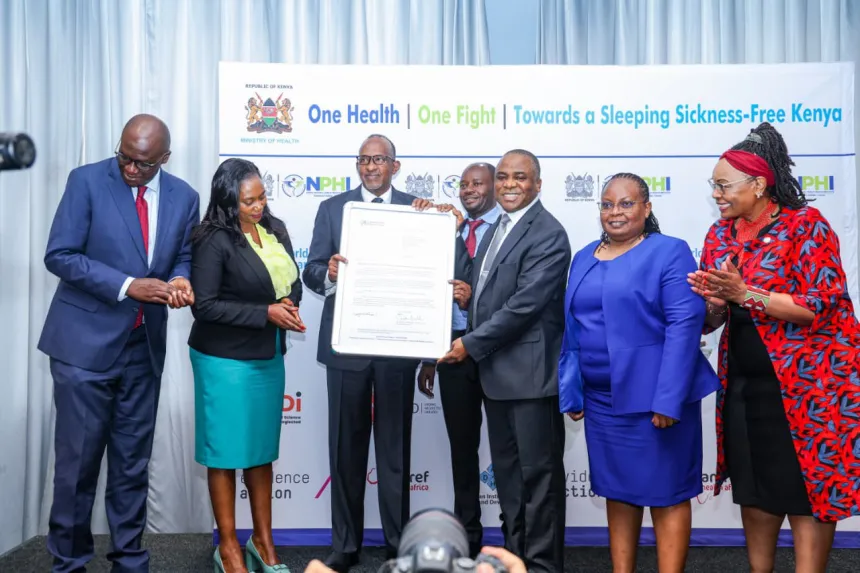Kenya has been officially validated by the World Health Organization (WHO) for eliminating Human African Trypanosomiasis (HAT), also known as sleeping sickness, as a public health problem a landmark achievement in disease control.
The milestone was announced on Friday during a ceremony themed “One Health One Fight Towards a Sleeping Sickness-Free Kenya”, attended by Health Cabinet Secretary Aden Duale. He noted that the country has reported zero indigenous cases since 2009, attributing the success to strong policy, effective leadership, scientific excellence, and community participation.
“This achievement will not only protect our people but also pave the way for renewed economic growth and prosperity,” said Duale, reaffirming Kenya’s commitment to sustained surveillance, early detection, community engagement, and integration of HAT services into primary health care.
HAT, a vector-borne disease caused by the parasite Trypanosoma brucei and transmitted by tsetse flies, is fatal if untreated. Kenya is affected by the rhodesiense form (r-HAT), found in eastern and southern Africa, which progresses rapidly and can cause death within weeks.
The first cases in Kenya were detected in the early 20th century. Since then, consistent control measures have led to over a decade without indigenous cases. The last autochthonous case occurred in 2009, while the last two exported cases were recorded in 2012 in the Masai Mara National Reserve.
To safeguard these gains, Kenya has strengthened HAT surveillance in 12 health facilities across six historically endemic counties, training clinicians and equipping them with advanced diagnostic tools. The country also continues to monitor tsetse fly populations and animal trypanosomiasis through the Kenya Tsetse and Trypanosomiasis Eradication Council (KENTTEC).
WHO Director-General Dr. Tedros Adhanom Ghebreyesus congratulated Kenya, noting it is now the 10th country to eliminate HAT, joining nations such as Uganda, Rwanda, and Ghana. WHO and partners, including FIND, will support post-validation surveillance to prevent resurgence.
This marks Kenya’s second elimination of a neglected tropical disease, following the eradication of Guinea worm disease in 2018. Globally, 57 countries have eliminated at least one NTD.
“This success reflects years of collaboration between governments, research institutions, development partners, and communities,” said Dr. Patrick Amoth, Director General of Health. “Our focus now is sustaining these gains for future generations.”

